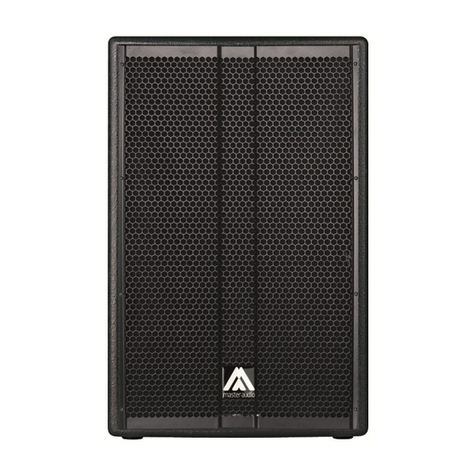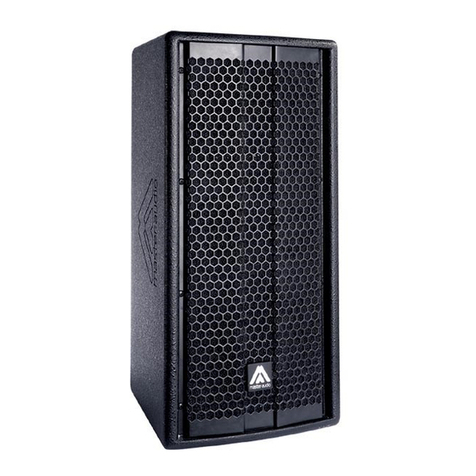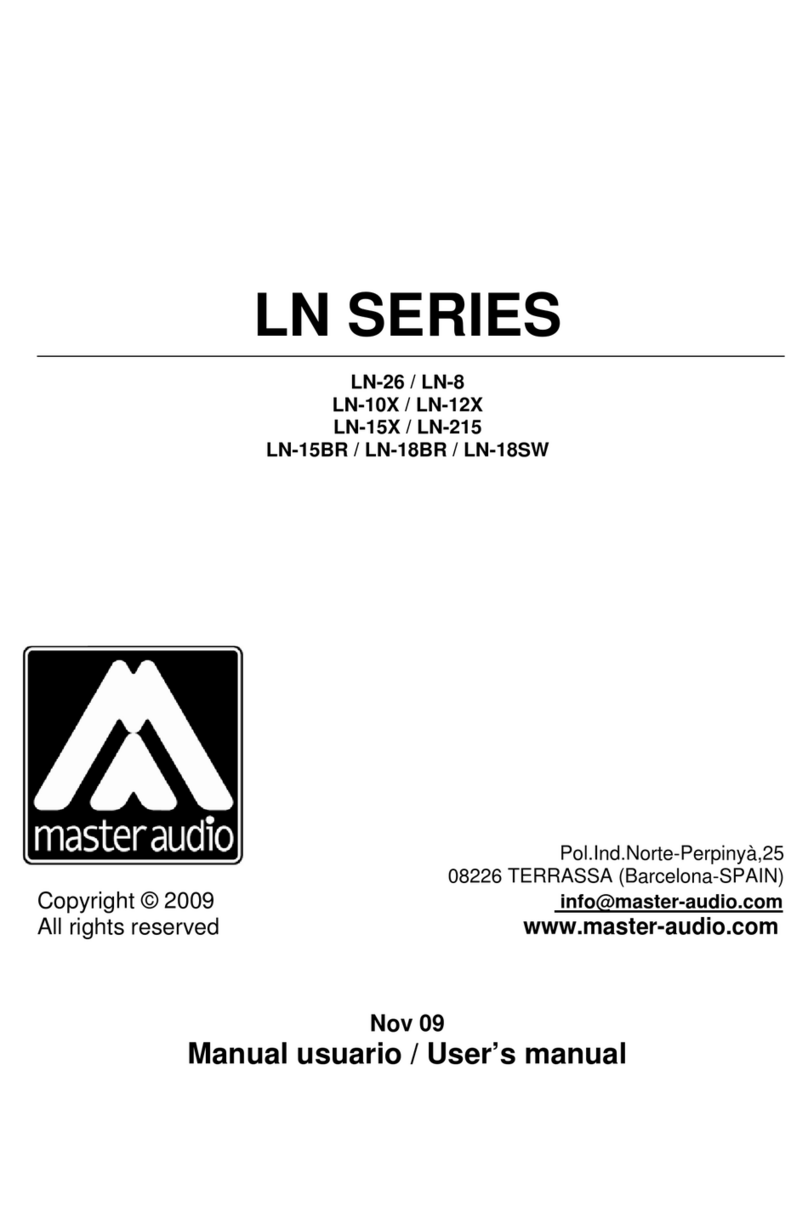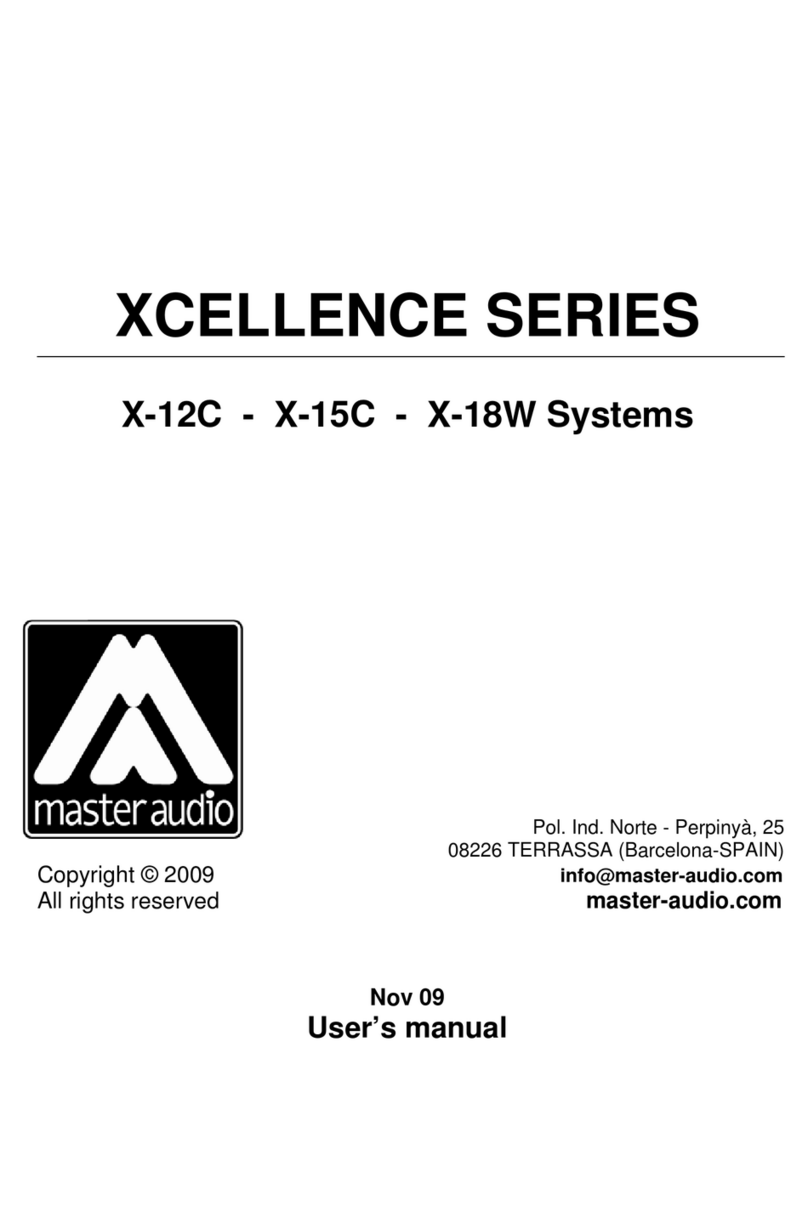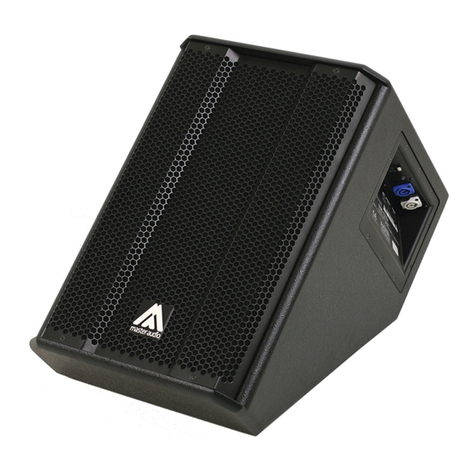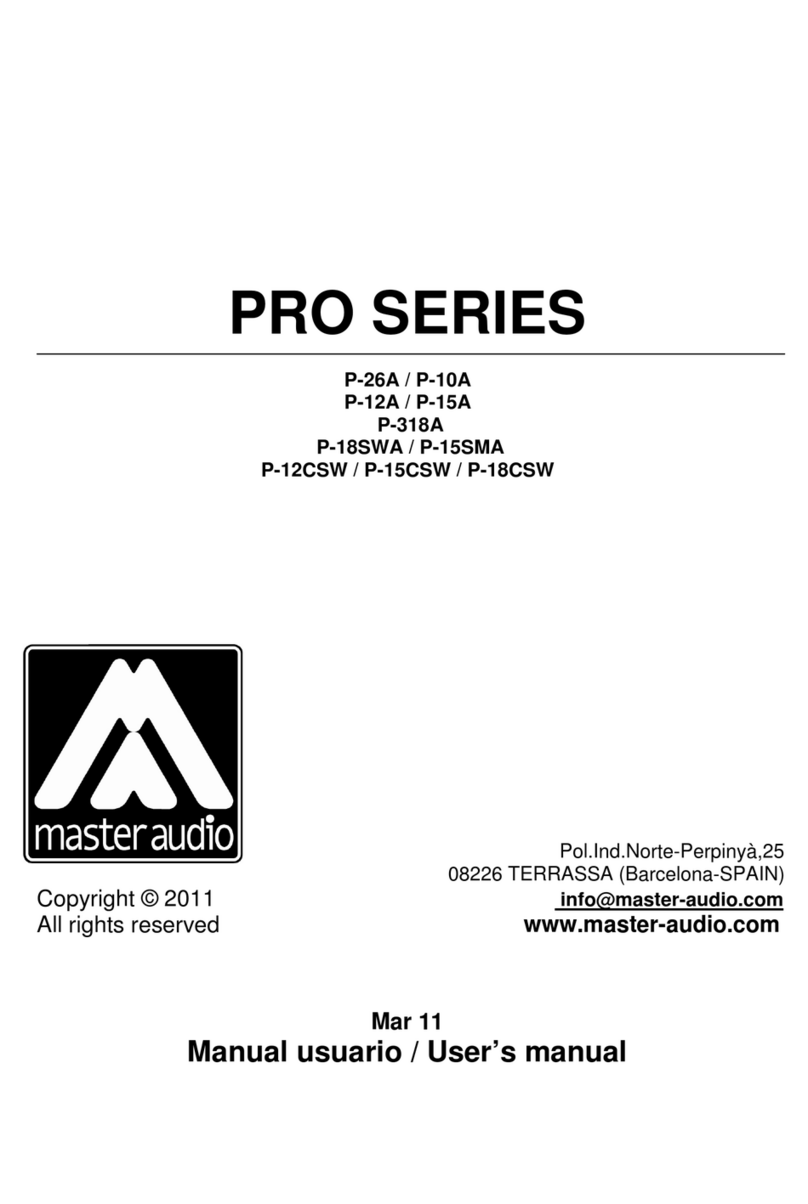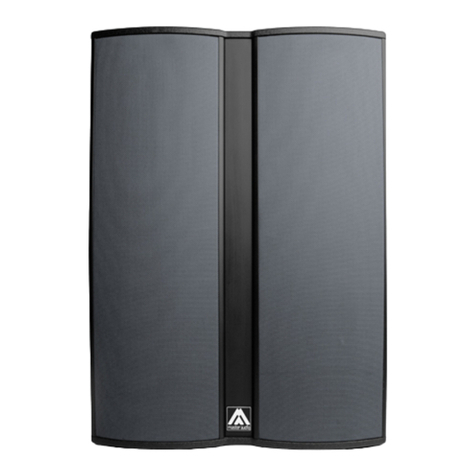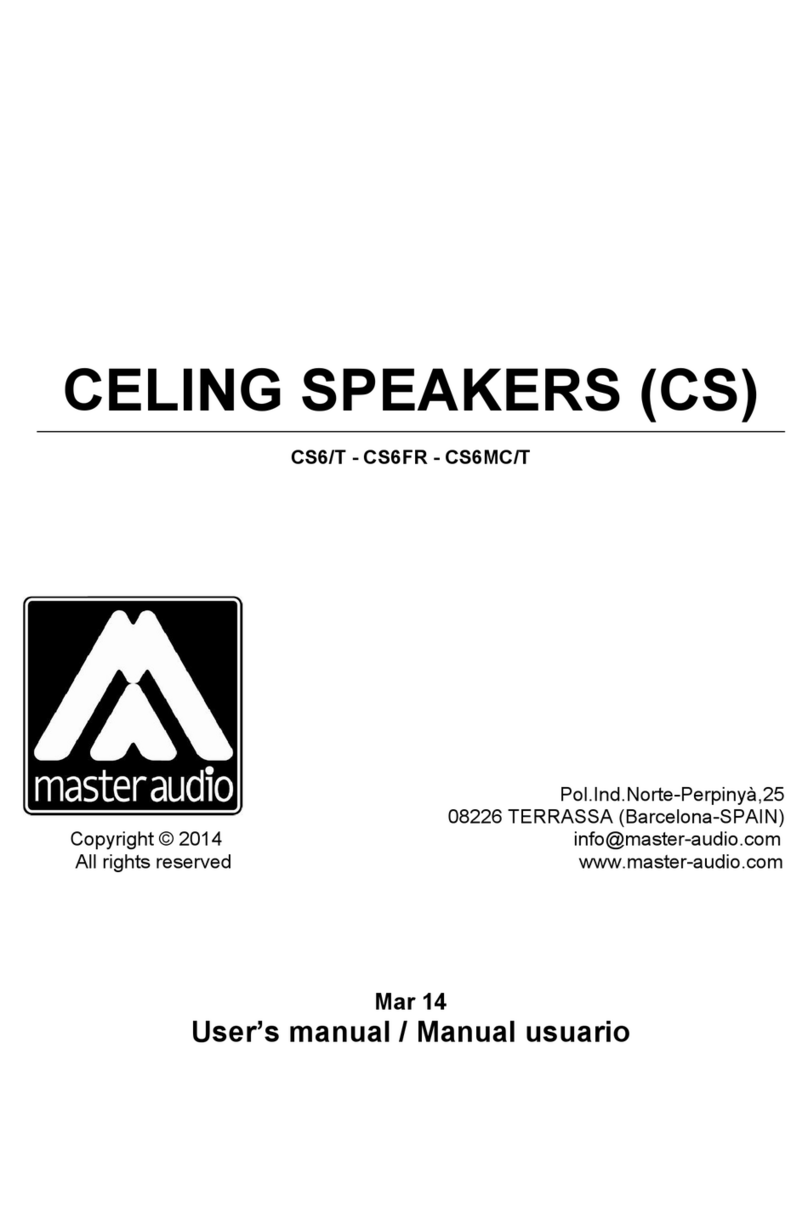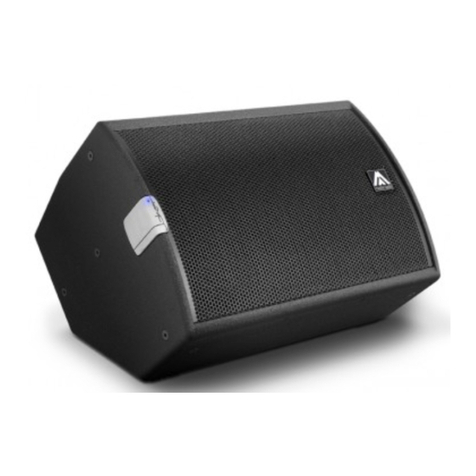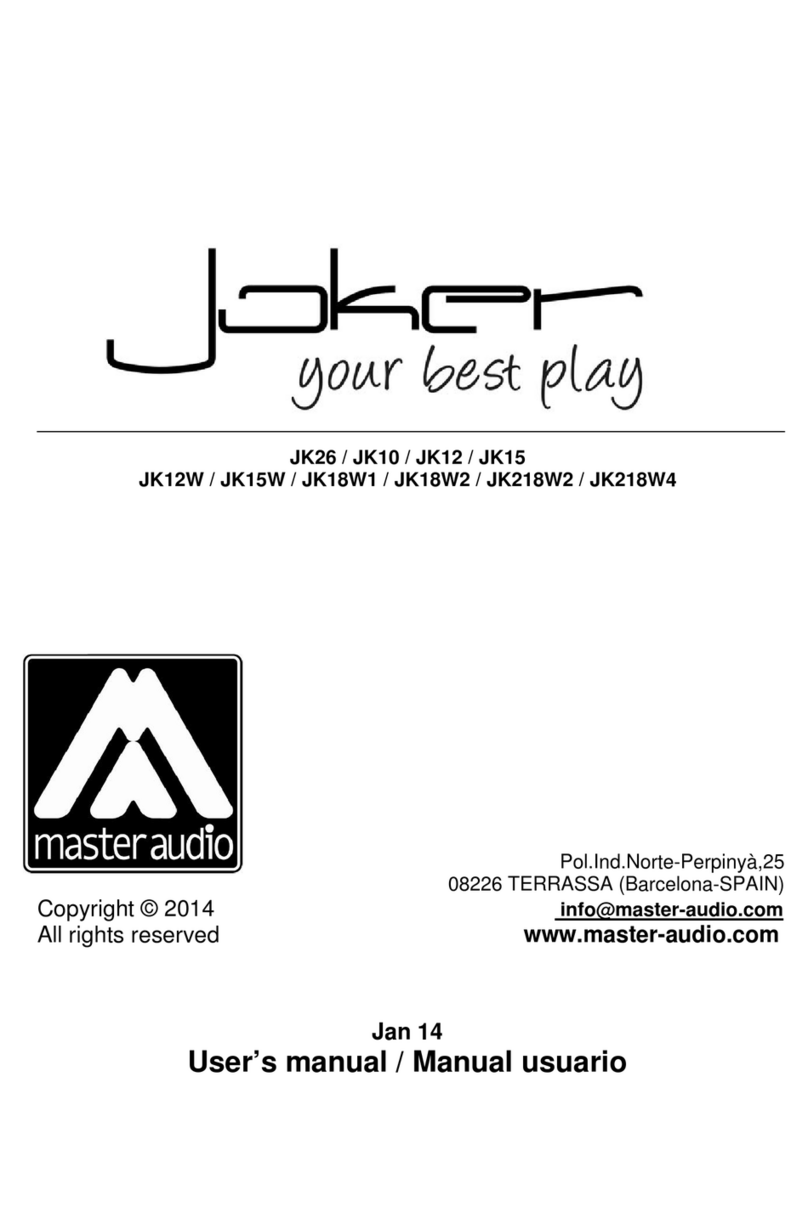Amate Electroacústica,s.l.
MA206/MAW115.Version 1.3 Nov 08 8
2.2. 6.5" Neodymium Woofers
The low-mid way includes two 6.5" Neodymium woofers, with 1.5" aluminium voice
coil
2.3. 1" Compression drivers with waveguide
The high frequency way includes one 1" compression drivers coupled to planar
waveguides. Thanks to their Pure Titanium 44mm diaphragm we achieve an
extremely good and clear sound, better than any other option.
The accurate design of our waveguide transforms the spherical waves produced by
the driver into planar waves, while transversal stationary waves are also avoided
within the audio field (up to 20kHz).
2.4.Finish
In its continuous research into offering the best product at all levels, the MA-206 has
been made of vibration and moisture-resistant birch plywood. All cutting and milling
work, as well as drilling operations, has been developed by computerized numeric
control machinery (CNC) which allows us to assure perfect and accurate assembly.
The black finish, which uses totally ecological water-based acrylic resin paint, provides
an excellent external protection.
We also include a 1.5mm steel Front grille with 5mm acoustically transparent foam.
Each unit incorporates rigging for safe, easy and quick flying or stacking.
2.5. MA-206/D System
D=DSP version of MA-206 with independent amplification on each way and internal
processing through DSP included. Transducers and waveguides are those explained
in 2.2 and 2.3.
The Class D amplification modules are 1000 W for the low way and 500 W for the high
way. Their high efficiency (almost 90%) allows their location on the lower panel without
the necessity of forced cooling. We eliminate any fan or any other auxiliary device
which may fail because of extra mechanical work.
The DSP control software allows:
•Parametric equalizations
•Delays
•Gain control for each way
•Crossovers up to 24 dB/Oct
•Limiters for each way
The adjustments can be done through a rear screen placed on each MA-206/D or
through PC with RJ45 connectors.
